Every month at Past Offences an intrepid band of bloggers proffers their opinions on a particular year on crime fiction. I call it Crimes of the Century.
The stakes were high this time. Regular player JJ recently made a case that 1937 was the Golden Age of the Golden Age. Would our findings back him up, or send him back to the drawing board for more graphs?
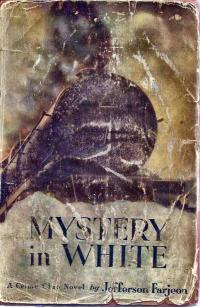 Brad blew in first with a flurry of snowflakes and his review of J. Jefferson Farjeon’s Mystery in White:
Brad blew in first with a flurry of snowflakes and his review of J. Jefferson Farjeon’s Mystery in White:
Mystery in White strikes me more as a comforting British novel full of nice people you want to spend time with, but there’s some criminal stuff on the fringes that needs to be sorted out before we can all eat and open our presents. Everyone here is nice. Even Mr. Hopkins, the bore, veers from obnoxious to adorable by the end. There are some very unnice people in the story, but most of their machinations occur very offstage, both in terms of time and space. This is not the novel to pick if you want that luscious GAD moment of somebody being unmasked. No point complaining about that! It’s just not that kind of story.
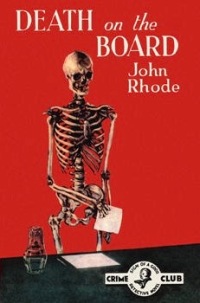 The Puzzle Doctor over at In Search of the Classic Mystery Novel started the month with two good’uns. John Rhode’s Death On The Board…
The Puzzle Doctor over at In Search of the Classic Mystery Novel started the month with two good’uns. John Rhode’s Death On The Board…
Porslin, Ltd, was a hugely successful company, dealing in “ironmongery of every description”. Well, you could be successful at that in 1937, apparently. But the company is in turmoil due to an explosion at the home of Sir Andrew Wigginhall, the chairman of the board of directors, that all but destroys the house and leaves little bits of Sir Andrew all over the place.
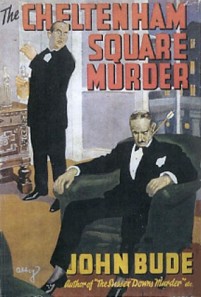 … and John Bude’s The Cheltenham Square Murder:
… and John Bude’s The Cheltenham Square Murder:
Regency Square is a picturesque residence with only a hint of the simmering hostility between certain occupants, to the outsider at least. It’s home to a collection of individuals who, mostly, share a common interest in archery. This fact becomes rather important when one of their number, Captain Cotton, ends up with an arrow in the back of the head. A barbed arrow, chosen for its lethality…
More from the Puzzle Doctor this month.
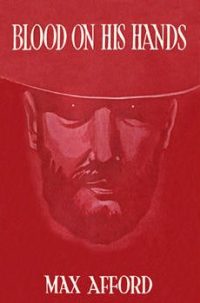 JJ at The Invisible Event went down under for his first 1937 book, Blood on His Hands by Max Afford, noting that:
JJ at The Invisible Event went down under for his first 1937 book, Blood on His Hands by Max Afford, noting that:
Inevitably, fascinating off-hand facts permeate the narrative: the currency at this time was pounds sterling, not Australian dollars; not every patron of a theatre or cinema got a ticket stub to prove their alibi, it depended on the type of seat you sat in; I finally understand what a cork-tipped cigarette is, as many brands are sold unfiltered (everyone smokes — everyone; if this were an Edmund Crispin novel there would doubtless have been an authorly apology for a delay in proceedings while he waited for the fog to clear so he could continue describing the action). For people like myself who take an additional pleasure in such historical minutiae alongside their murder, it’s a veritable smorgasbord of throwaway details indigenous to this period.
 Staying down under, Kerrie at Mysteries in Paradise was the first reviewer of Agatha Christie’s canine tale Dumb Witness,
Staying down under, Kerrie at Mysteries in Paradise was the first reviewer of Agatha Christie’s canine tale Dumb Witness,
The story is set in Berkshire and centres on Emily Arundell, a wealthy spinster surrounded by grasping young relatives. She is injured by falling down a staircase, and everyone believes that she tripped over a ball left by her pet fox terrier, Bob… The assumption is that if the dog, Bob, could tell his story, he would be able to narrate what actually happened.
Kerrie also compared the book with the 1996 David Suchet film, finding the scene shifted from Berkshire in the 1930s to the Lake District in the 1950s, and concluding that the book is the better of the two.
The actual plot/murderer is unchanged, and all is revealed, Poirot-style, in a final denouement when all the characters in the story are assembled. However, many of the red herrings are either left out or do not work.
Jose Ignacio at A Crime is Afoot also picked up Dumb Witness:
For today’s taste, it might be somewhat out-of-date, but nevertheless it reflects nicely the era in which it was published. I will not include it among Christie’s bests, but it is a very entertaining and enjoyable read anyway.
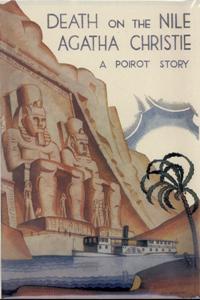 Christie’s other 1937 offering, Death on the Nile, fared a *little* better than Dumb Witness at The Invisible Event:
Christie’s other 1937 offering, Death on the Nile, fared a *little* better than Dumb Witness at The Invisible Event:
Tastes and reactions differ, of course, and Christie provides a decent amount of depth and discovery once the murders start (yay!), including some great foreshadowing of what would have been touchy subjects at the time, but that opening chapter is a mystery to me. Aside from providing what has perhaps become an expected trope of the time, this doesn’t seem at all in keeping with Christie’s dense and dazzling puzzle plots that were ten-a-penny at this time in her career.
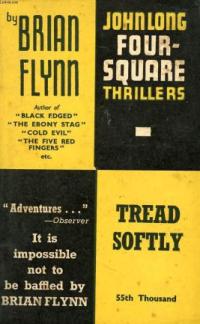 The Puzzle Doctor returned, making a good case for rediscovering forgotten author Brian Flynn in his review of Tread Softly:
The Puzzle Doctor returned, making a good case for rediscovering forgotten author Brian Flynn in his review of Tread Softly:
As I said, this is a #1937book so what does it say about 1937? Well, not a vast amount. Merivale is involved in a film, so the short turnaround between the cameras stopping rolling and the film appearing in a cinema is a little surprising. Oh, and the existence of the Illyria Super-Cinema in Leicester Square? Was that a real place? It doesn’t seem have any mentions on the web. Oh, and the supporting police officer requires a tankard for a beer that he is offered because only “pansies” drink from glasses. Oh dear.
Bernadette at Reactions to Reading was underwhelmed by Margery Allingham’s The Case of the Late Pig:
The story was a complicated thing to do with disguised bodies, dodgy doctors and some fairly obvious wordplay. When reading the print version I had no clue what was going on by the end because I just wasn’t interested enough to pay attention. So I had another go at it by downloading the audio book and listened while stuck in traffic. That format was more agreeable (or there was less for me to be distracted by) and at least I cottoned on to the salient points of the plot but it still seemed to be one of those golden age novels that was telling a story that no one could ever mistake for reality, not even for a moment. Or maybe there was a world in which people acted and spoke like utter gits but if so it’s not a world I’m particularly engaged by.
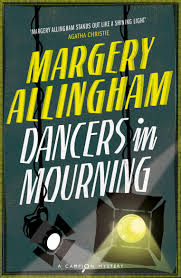 The better Allingham of 1937 was Dancers in Mourning, reviewed by Tracy at Bitter Tea and Mystery.
The better Allingham of 1937 was Dancers in Mourning, reviewed by Tracy at Bitter Tea and Mystery.
I am under Allingham’s spell, and even a lesser effort is fun for me. The plot dragged in spots, and went on too long, but there were bits of it that I loved. Uncle William, the author of the memoir that the musical review is based on, is an old friend of Campion’s and one of the few likable characters. His presence injected some humor into the proceedings. When the Sutane’s butler quits after a disastrous party, Campion’s manservant Lugg is dragooned into acting as butler for as long as needed. He and the sweet Sarah Sutane become fast friends; he teaches her card tricks and how to pick locks.
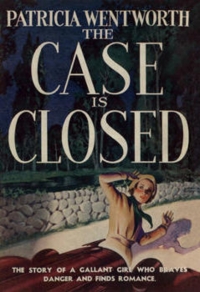 Brad had some questions about his second choice, Patricia Wentworth’s The Case is Closed.
Brad had some questions about his second choice, Patricia Wentworth’s The Case is Closed.
For starters, if 1937 really is the confluence of all the great things classic mystery fiction had to offer, why would Wentworth write this particular book? I know, she didn’t get the memo from JJ, but you would expect that most classic detective novelists would be writing at the top of their game during the year when their genre is supposed to be at the top of its game!!! And yet, this does not happen here. So I have to ask the Wentworth fans: is this what I should expect from the typical Miss Silver mystery, or has something gone awry with this particular title?
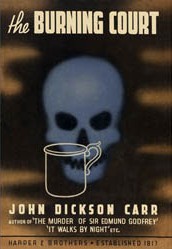 However, Brad makes a strong case for reading John Dickson Carr’s The Burning Court, which I haven’t, yet:
However, Brad makes a strong case for reading John Dickson Carr’s The Burning Court, which I haven’t, yet:
Carr does not disappoint: he provides a rational truth in the very nick of time, and it’s a goodie. The solution is both surprising and inevitable, the way a good solution should be. As Greene tells us, Carr “often pointed out that the human horrors can be infinitely worse than anything produced by ghosts or vampires.” However, I will say that the reveal, where the detective explains all, is upset by an interesting and rare event that does quite a bit to shatter our complacency. And Carr hasn’t even started. That’s when things get crazy . . . and here’s where I let the veil of silence descend upon the rest.
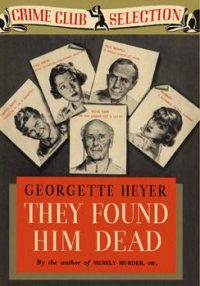 RogerBW found Georgette Heyer’s They Found Him Dead a bit of an also-ran.
RogerBW found Georgette Heyer’s They Found Him Dead a bit of an also-ran.
Silas Kane is found at the foot of a cliff on the morning after his sixtieth birthday party; obviously he slipped. But then his heir is quite blatantly shot, and attempts are made on the life of the next heir. There’s the usual cast of suspects: the woman having a blatant affair, the owners of the other half of the business (who have big plans for expansion), and so on. More interestingly, there’s a lad of fifteen who’s very much one of Heyer’s “younger brother” archetypes, but here his enthusiasms are less for dancing bears and more for detection.
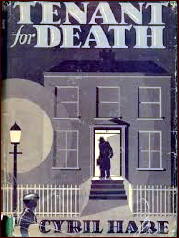 Scott at The Nick Carter & Carter Brown Blog looked at one of my favourite authors, Cyril Hare with Tenant for Death:
Scott at The Nick Carter & Carter Brown Blog looked at one of my favourite authors, Cyril Hare with Tenant for Death:
Two young estate agent’s clerks are sent to check an inventory on a house. Daylesford Gardens, South Kensington, is an unlikely address for the discovery of death by strangulation. Even more unusual is that the house does not belong to the deceased financier. In the meantime, the mysterious tenant, Colin James, has disappeared. Inspector Mallett of Scotland Yard is brought in to unravel a complicated trail. Mallett gets to work very soon, linking the murder with the release from prison of an ex-banker, who’d been connected with a notorious fraud case.
Kate at crossexaminingcrime also read Tenant for Death:
Despite being a novel published near the end of the 1930s, there isn’t any mention of Fascism or any fears of an impending war with Germany. Communism makes a brief foray into the novel in the form of comic skit between a lorry driver and one of the suspects. However, through a rather reactionary character, comments are made on India and in particular on Mahatma Gandhi who the character believes is ‘the biggest enemy our Indian Empire has got.’ Suffice to say he isn’t impressed that his daughter has named her dog after him.
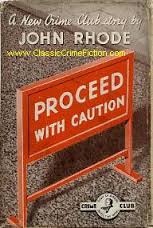 ‘What about the Puzzle Doctor?’ I hear you cry. Well, he came back with John Rhode’s Proceed with Caution,
‘What about the Puzzle Doctor?’ I hear you cry. Well, he came back with John Rhode’s Proceed with Caution,
You do learn how a portable tar boiler works – well, I found it interesting how roadworks were done back in the day – and there’s a lovely section about the changing times. How the workhouse is now called a Poor Law institute, an asylum is now a mental hospital, an undertaker became “a funeral finisher” – eh? and best of all, a pair of pyjamas is now called a “slumber suit”. Well, that last one caught on, didn’t it?
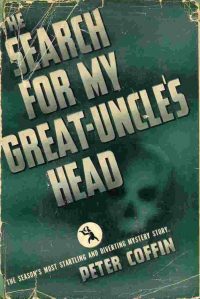 I’m surprised (just on the weird title front) that I hadn’t heard of JJ’s next read, Jonathan Latimers’ The Search for My Great-Uncle’s Head, although it doesn’t sound like I’ve missed much:
I’m surprised (just on the weird title front) that I hadn’t heard of JJ’s next read, Jonathan Latimers’ The Search for My Great-Uncle’s Head, although it doesn’t sound like I’ve missed much:
It starts off with a stir of Gothic (chapters 1-3), then becomes a sort of ‘meet the family’ comedy of sorts (chapters 4-12), and then finally decides it might want to be a detective novel at the halfway stage (chapters 13+). This middle section is the killer, because very little happens while Latimer juggles tones and tries to settle on what to go for. None of the comedy is especially funny, none of the events therein have any real bearing on the detective yarn to come…by the time Colonel Black showed up to finally start actually looking into the death and decapitation in the title I’d pretty much checked out.
 Kate at crossexaminingcrime read us Dorothy L. Sayers’ Busman’s Honeymoon:
Kate at crossexaminingcrime read us Dorothy L. Sayers’ Busman’s Honeymoon:
One of the reasons why I have enjoyed Sayers’ work so much is because of her writing style and her turn of phrase, which can often bring a smile to my lips. Some of my favourite lines from this story, which I think earned such a title through their bizarreness include lines such as: ‘If the young woman has brains and bowels, she will suit well enough’ and ‘his thoughts revolving silently in this squirrel-cage of mystification.’ The Dowager Duchess who is definitely a fictional character you wished really existed also offers a number of funny phrases, such as when she is talking about her son, Peter: ‘he’s just as vain and foolish as most men and not a chameleon to smell any sweeter for being trodden on. On consideration, think I meant ‘camomile.’’ At times I do have to admit that Sayers is a little uncomfortable about describing this next stage of Peter and Harriet’s relationship, when passions and feelings are more demonstrable, but in the main I just found these instances quite amusing really, such as when Harriet finds Peter’s spine ‘enslaving’.
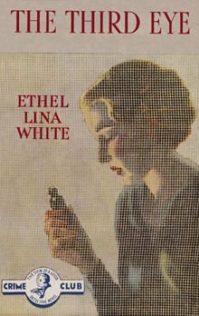 At A Hot Cup of Pleasure, Neer brought us Ethel Lina White’s The Third Eye:
At A Hot Cup of Pleasure, Neer brought us Ethel Lina White’s The Third Eye:
Young, spirited Caroline Watts feels (quite mistakenly) that she is becoming bothersome to her sister Lesley and brother-in-law Professor Freeman and wants to take up a job and move out of their home. Without any professional degrees, she applies for the job of a sports-teacher at Abbey school. Professor Freemason is not happy about it but the two women (the ‘practical sex’ as White puts it) convince him that he is worrying about nothing. However, Caroline too feels the same misgivings when she reaches the school on a dark, drizzling night.
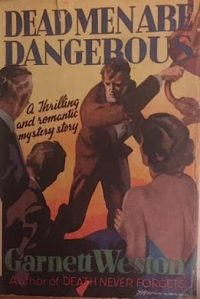 John at Pretty Sinister Books played by mistake this month, not realising Garnett Weston’s Dead Men Are Dangerous was from 1937 until it was too late.
John at Pretty Sinister Books played by mistake this month, not realising Garnett Weston’s Dead Men Are Dangerous was from 1937 until it was too late.
There are several murders but instead of the heirs being targeted it is the group of New Yorkers who start dropping like flies. The friends all turn sleuths and as each gets closer to the truth it is the amateur detective who meets his end. Oddly, the group of squabbling unlikeable heirs (all but the doe-eyed Cora Holland, who serves as rudimentary love interest for our protagonist Kim Hayward) all turn out to be the biggest group of red herrings I’ve encountered in a mystery novel.
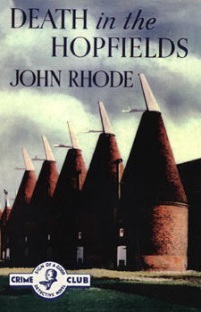 The Puzzle Doctor (remember him from earlier?) found John Rhode’s Death in the Hop Fields a treasure-trove of period detail:
The Puzzle Doctor (remember him from earlier?) found John Rhode’s Death in the Hop Fields a treasure-trove of period detail:
There’s the man running the local pub, who always claims to want to move on and never does, who resents the hop pickers and yet still puts complex arrangements in place to serve them and prevent problems with the locals. There’s the fact that near everybody smokes – the pub even purchases cigarette packets by the sack! The casual use of the phrase “four of their surviving children” with regard to a family who would have grown up through the Great War and the Spanish Flu epidemic. The fact that the hop-pickers were so plentiful, they were followed by sutlers, namely mobile tradesmen catering to their particular needs. The fact that “swearing on the public highway” seems to be an arrestable offence. The use of the phrase “infernal machine” instead of “fire-bomb” or “incendiary device”. It’s such a vivid picture of a small section of the world that has long since disappeared, it’s absolutely fascinating to me.
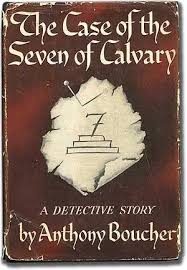 Jason Half read a book I’ve been meaning to re-read for a while, Anthony Boucher’s The Case of the Seven of Calvary,
Jason Half read a book I’ve been meaning to re-read for a while, Anthony Boucher’s The Case of the Seven of Calvary,
Due to the amused self-awareness of Martin Lamb, the story’s Watson and the person with whom the reader is most aligned, Boucher’s winking tone could have overcorrected and turned the puzzle into a trifle or an insignificance, but he manages to avoid this problem. Frequent references are made to the traditional structure of mystery literature – and how the current plotline adheres to or veers from the familiar beats of detection – as well as the luminaries (authors and creations) of the time: Arthur Conan Doyle, Ellery Queen, and John Dickson Carr are mentioned, as well as Dr. Thorndyke, Roger Sheringham, Reggie Fortune and Philo Vance. For most mystery fans, the allusions will be more welcome than intrusive.
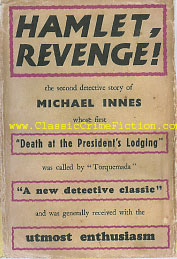 Moira at Clothes in Books brought us Michael Innes’ theatrical mystery Hamlet, Revenge!
Moira at Clothes in Books brought us Michael Innes’ theatrical mystery Hamlet, Revenge!
This was the second of Michael Innes’s Appleby mysteries, and has an excellent set up: a semi-amateur production of Hamlet at a lordly Gothic castle, featuring members of the family and entourage as actors alongside a professional actor. One of the amateurs is the Lord Chancellor of England, who is carrying a most important document of state, one that would be very valuable to unfriendly governments. A murder is of course staged to occur during the performance, and the vital paper goes missing.
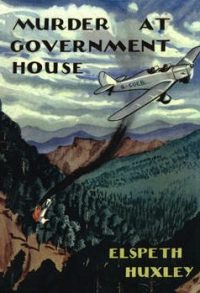 Bev at My Reader’s Block brought us Murder at Government House by Elspeth Huxley
Bev at My Reader’s Block brought us Murder at Government House by Elspeth Huxley
Huxley gives her readers an interesting look at colonial life in Africa during the 1930s with an excellent look at the tensions experienced by the indigenous people trying to adapt to the ways of the British while experiencing the pull of their African heritage. There is also hints of the tensions breaking in the world with discussions of how the Japanese would love to get a foothold through a concession of some farmland. There is no overt references to the storms of war which are brewing, but the reader’s historical hindsight can read between the lines.
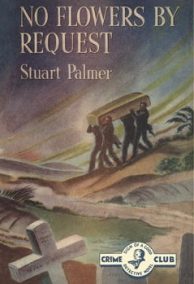 JJ at The Invisible Event presented a bouquet to Stuart Palmer’s No Flowers by Request:
JJ at The Invisible Event presented a bouquet to Stuart Palmer’s No Flowers by Request:
There is an infectious enthusiasm in the moment the coroner details the forensic tests he has undertaken in trying to establish certain facts about the crime, the kind of thing usually taken as known these days and so easily swept aside being brought out fully to bask in two whole paragraphs of its own, complete with excitable character asides. Palmer is enjoying himself with these little touchstones, and even if one character is arguably justified in complaining at a late stage that “murders are supposed to have clues…tangible things that you can wonder about” — this is not the detective novel in full effulgence — there are enough little incidents throughout to keep you guessing and wondering.
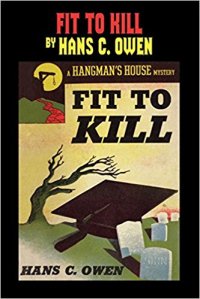
Bev donned cap and gown for Fit to Kill by Hans C. Owen.
Set at an unnamed (but very Harvard-like) Eastern university, Professor Percival Trout sets out to teach Sergeant Salvadore “Sally” Cusani–and the reader–a thing or two about the finer points of ratiocination…. This short novel looked to tick off quite a few boxes in my mystery lover’s wish list–vintage mystery, academic mystery, humor, quirky characters. And, for the most part, it was an enjoyable read. The interactions between Sally and the rest of the characters, particularly Professor Trout, are quite fun. The professor gets to lecture a bit on detection without overdoing it and there is plenty of action to move the story along.
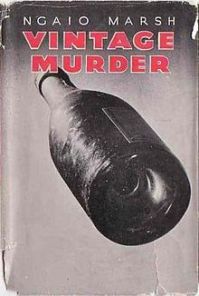 Our final queen of crime now – the Puzzle Doctor opened Ngaio Marsh’s Vintage Murder, a paeon to New Zealand, but…
Our final queen of crime now – the Puzzle Doctor opened Ngaio Marsh’s Vintage Murder, a paeon to New Zealand, but…
The mystery is distinctly lacking in appeal. The investigation is basically one long series of interviews based on who has or hasn’t an alibi for various aspects of the crime, and the characters being interviewed aren’t desperately interesting – and neither are the interviewers, come to that. Anyone who’s read a few mysteries will spot something crucial about the crime, but it would take an aficionado with a notebook and a map of the theatre to work out the exact “how” of the crime. But I’d be impressed with anyone who really cared by that point… It reminded me of the so-called railway timetable mysteries, working out who could be where and at what time.
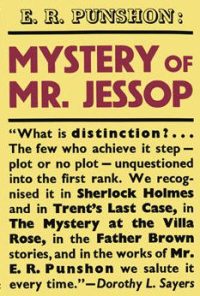 And returned with E. R. Punshon’s Mystery Of Mr Jessop.
And returned with E. R. Punshon’s Mystery Of Mr Jessop.
I’ll be honest, it didn’t exactly grab me as much as the other Punshon’s that I’ve read.
And there’s a couple of reasons for that. First off, almost every character (of which there are quite a few) is up to something. Not that that’s a bad thing in a mystery, far from it, but for a long part of the book, there wasn’t a character, apart from Bobby, that I felt that I could sympathise with. The cast is an admittedly distinctive lot, from a Duke and a Duchess, down to the lower echelons of society, but they didn’t really click for me.
And the other is my cat.
Jose Ignacio agreed about Mystery of Mr. Jessop (we don’t learn about his cat, if any).
I have mixed feelings. The story is plot-driven and centres around the disappearance of a fabulous diamond necklace which belongs to an American film actress called Fay Fellows. For my taste the story begins to lose interest after the first chapters to improve significantly in the final chapters. The reader will find out that all the clues are at sight, though hidden in some way by an excessively entangled plot. Anyhow the solution to the puzzle is quite clever but, for some reason, its reading did not manage to hook me.
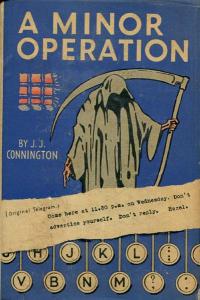 The Puzzle Doctor’s last was J. J. Connington’s A Minor Operation:
The Puzzle Doctor’s last was J. J. Connington’s A Minor Operation:
It’s a relatively simple tale, and does suffer a little from a lack of credible suspects, but the plot mechanics as to what happened to Hazel and Deerhurst are meticulously planned without the reader ever needing a wallchart and post-it notes to work it out. Yes, there is one obvious issue that, if heeded as any normal person would do, would derail the plot entirely, but this is, I thought, really well done.
Dan at The Reader is Warned reviewed three shorts by Ronald Knox, including 1937’s The Motive:
Knox also wrote stand alone detective works, and The Motive is a top example. A satirical work no doubt, this short is set in the common rooms of Simon Magus college, a mythical college that Knox used as a way of exploring and satirising the culture of university don’s. Here the story is told by the infamous lawyer Sir Leonard Huntercombe, a man who was ‘probably responsible for more scoundrels being at large than any other man in England’. Huntercombe waxes lyrical, (mainly to stop another don from talking), on a strange set of crimes that almost took him to court.
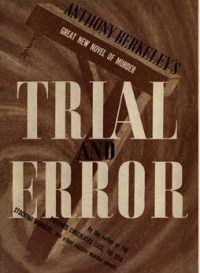 JJ was left bemused by his final choice, Anthony Berkeley’s (aka Frances Iles’) Trial and Error
JJ was left bemused by his final choice, Anthony Berkeley’s (aka Frances Iles’) Trial and Error
The text has a tendency to maunder, with a fair amount of what is written having a nugatory effect on the overall solution. This is where Iles would have tightened things up, and would have pushed this good, bold, and hugely influential novel (I can, right now, name eleven novels published after this that take this same setup and do exactly the same thing with it) into the realm of greatness. It’s amazing to think that Berkeley had been overturning tropes for pretty much his entire career, but it would be nice if a few more of those books were stone-cold classics.
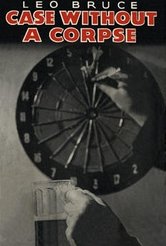 Jason Half got in just under the wire, allowing for timezones, with Leo Bruce’s Case Without a Corpse, the second Sergeant Beef tale.
Jason Half got in just under the wire, allowing for timezones, with Leo Bruce’s Case Without a Corpse, the second Sergeant Beef tale.
The story’s clever premise proves to be its best feature: one blustery evening during a game of darts, a young man named Rogers enters the pub, gets the sergeant’s attention by stating, “I’ve come to give myself up. I’ve committed a murder,” and promptly dies after drinking from a bottle containing cyanide of potassium. This leaves Beef in a bit of a predicament. An examination shows fresh blood on Rogers’s sleeve, so the man appeared to have committed (or thought he had committed) a crime. But who is the victim, actual or intended? The answer proves oddly elusive.
 As for me, I don’t deliver many pannings on Past Offences, but I was moved to violence by The Face on the Cutting-Room Floor, a book so bad the author devoted half of it to criticising the first half.
As for me, I don’t deliver many pannings on Past Offences, but I was moved to violence by The Face on the Cutting-Room Floor, a book so bad the author devoted half of it to criticising the first half.
So… are we convinced 1937 was the Golden Age of the Golden Age? A strong argument against is that some of the most famed proponents of the art turned in turkeys – two lukewarm Christies, ‘a love story with detective interruptions’ from Sayers, a terrible and a not-very-good Allingham, a Marsh best appreciated for its descriptions of New Zealand. But on the other hand, there are some very strong contenders from lesser-known authors, and a couple of really good ones coming out of left-field.
I’d put it to the vote, but that always seems to go terribly these days, so I think we should finish off the rest of the golden age, and then decide.
But not in April. Now it’s 1977.




I’ll behave myself next month…
As for the Golden Age-ness of the year, after reading the introduction to Curtis Evans’ Masters of the Humdrum Mystery, I’m more inclined than ever to overlook 3/4 of the Queens of Crime in favour of the multitude of authors who were left by the wayside for no good reason. There are other years with just as good a claim, but I was impressed by 1937 as a candidate.
LikeLiked by 1 person
What a monster of a list! Seems to have drawn some great books out of the woodwork.
I think as JJ put it in his blog post on 1937, the concentration of the stylistic forms and ideas that make detective fiction what at it’s highest. I think this is proved somewhat by what The Puzzle Doctor commented that there were such a huge multitude of authors creating detective fiction at this exact time. Would be interesting to see if 1937 was also the year the most detective fiction was published.
LikeLike
A post that’s well worth saving it, for future references, Rich. Thanks
LikeLike
Yes, Jose Ignacio sums it up beautifully. Many books to follow up on. Thanks Rich!
LikeLiked by 1 person
haha I bet Brad is not going to be impressed with Death on the Nile being classed as a turkey or a lukewarm Christie!
LikeLiked by 2 people
What a lovely and lively group of Golden Age mystery titles represented — thanks again for your round-up work, Rich! I especially like the commingling of famous tentpole authors, respectable popular-at-the-times, and some now-forgotten names all getting their chance for recognition and resurrection. I shall be reading reviews and, time willing (which never seems available these days), also some of the recommended titles.
LikeLike
Quite a bumper round-up, Rich, thanks for indulging me…I don’t know what we’ve proved, but it’s always fun seeing what people have read and what they’ve made of it.
And if 1937 isn’t the peak, something from 1934 to 1938 will be. I wonder if there’s a more scientific way to approach this…
LikeLike
What an amazing year! I loved The Cheltenham Square Murder!
LikeLike
For my accidental participation I’m honored to have once again I received a special citation in the post title. Some great books in here, many of which I’ve read ages ago. The three best of those I’ve read above are The Burning Court, The Third Eye and The Case of the Seven of Calvary which is probably my favorite of Boucher’s mystery novels.
Does Steve get some kind of award for total immersion in 1937? Seven books?! Holy Mackerel! I doubt anyone else will be able to top his contributions in any future month. I certainly won’t be able to.
LikeLiked by 1 person